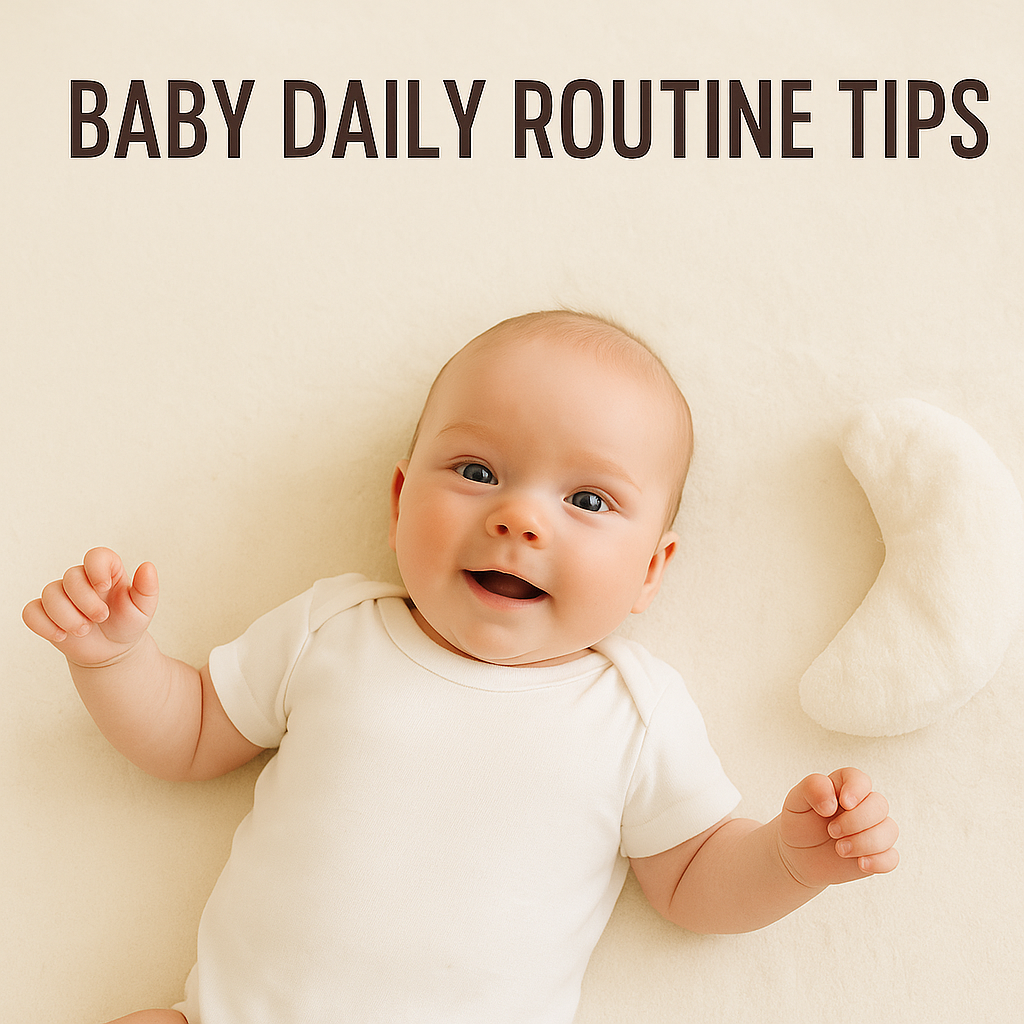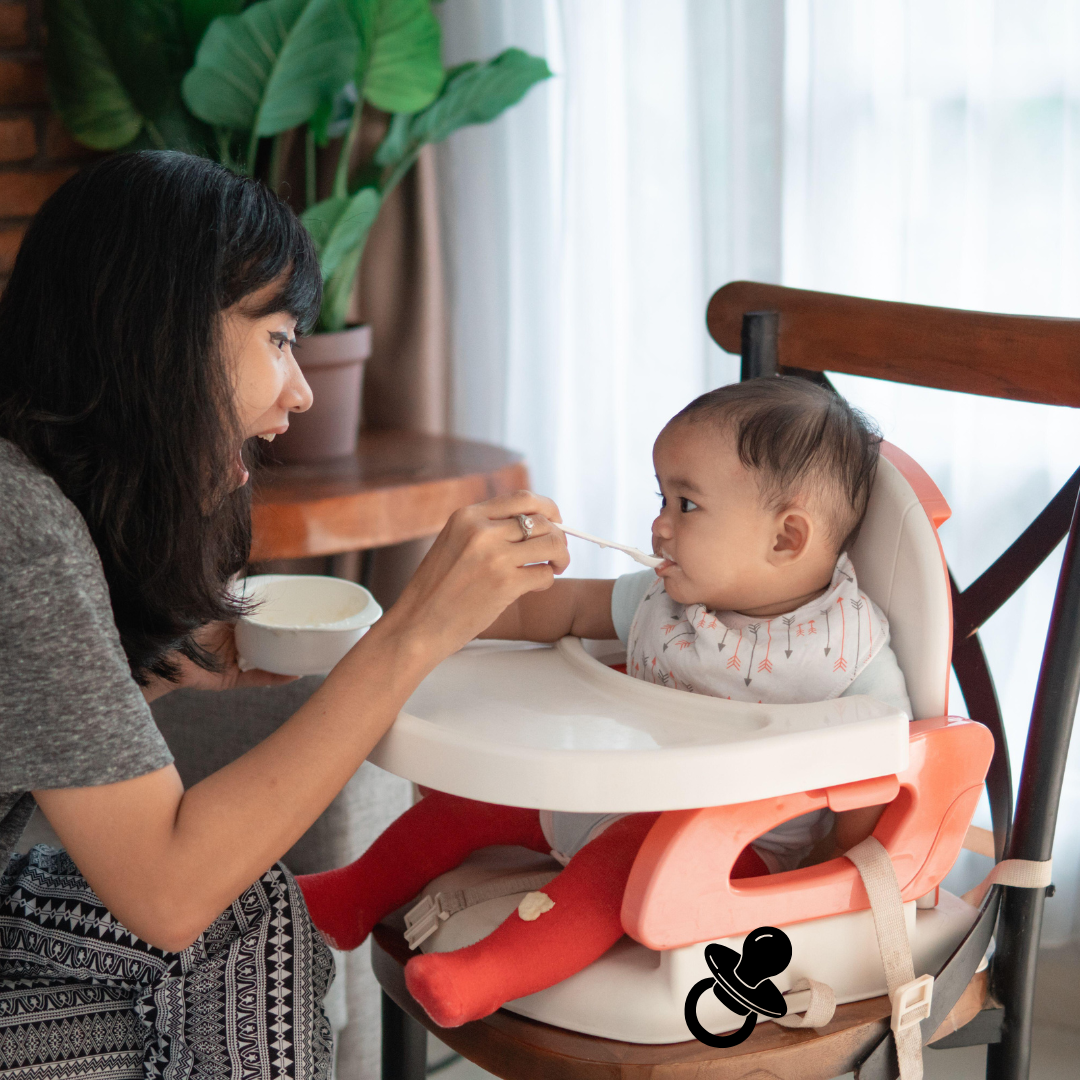As a new parent, you might be overwhelmed with the thought of establishing a baby daily routine. Babies and toddlers thrive on structure, but creating a routine that’s realistic can feel like an impossible task. While babies can’t adhere to strict schedules like older children or adults, a routine helps foster a sense of security and predictability for them. It also makes life easier for you, as it can create calm and consistency in your day.

In this blog post, we’ll explore how to set realistic routines for babies and toddlers, along with some practical baby daily routine tips to help both parents and children enjoy a harmonious day. Whether you’re looking for tips for bedtime, nap schedules, mealtimes, or fun playtimes, we’ll guide you through creating a balanced, flexible, and achievable routine for your little one.
Baby daily routine tips: Why Routines Matter for Babies and Toddlers
Before diving into how to set realistic routines for your baby or toddler, it’s important to understand why routines are so essential. Babies and toddlers, particularly during their first few years of life, need consistency to help regulate their emotional and physical development. A predictable routine brings the following benefits:
1. Security and Comfort: A consistent routine makes babies and toddlers feel safe because they know what to expect next. This is especially important during times of growth and change.
2. Better Sleep: Establishing routines around sleep (naps and bedtime) helps babies understand the cues for winding down. A regular sleep schedule can lead to better, more restful sleep for both the child and the parents.
3. Boosts Learning and Development: Having a predictable rhythm to the day allows babies to anticipate playtime, mealtime, and other developmental activities, enhancing their cognitive development.
4. Easier Transitions: Babies and toddlers can feel frustrated when transitioning from one activity to another. A routine makes these transitions smoother by creating expectations.
How to Set a Realistic Baby and Toddler Routine
When setting a routine, remember that babies and toddlers don’t need every minute of the day scheduled. Instead, focus on a few key activities—like naps, mealtimes, and bedtime—while leaving room for flexibility. Here are some tips on how to do that:
1. Start with Sleep
Sleep is the foundation of any baby’s routine. Babies (especially newborns) need a lot of sleep, with newborns typically requiring 14–17 hours per day, and toddlers needing about 12–14 hours in total (including naps).

Create a bedtime routine: A calming, consistent bedtime routine helps signal to your baby that it’s time for sleep. This could include activities like a warm bath, reading a book, and soft lullabies.
Daytime naps: Babies thrive on sleep during the day. Set up a consistent naptime that works for your baby’s natural rhythm. Try to follow their sleepy cues (rubbing eyes, yawning) and avoid keeping them up too long, as overtired babies can have difficulty falling asleep.
Sleep environment: Make sure the baby’s sleep environment is conducive to rest—dark, quiet, and comfortable.
2. Set Meal Times Around Their Hunger Cues
Newborns typically feed on demand, but once they reach around 34 months of age, they may develop more predictable hunger cues. At this stage, you can start setting a more structured mealtime routine.
Breastfeeding and bottle feeding: Aim for a regular feeding schedule while being flexible based on your baby’s appetite. Over time, feeding may transition into more set times (e.g., every 34 hours).
Introducing solids: By six months, you can begin introducing solids. Start with soft foods and gradually add variety. Make sure mealtimes are calm and unhurried, as babies can become overwhelmed with too much stimulation. Set up a basic feeding routine based on your baby’s individual hunger patterns.
Toddler meals: For toddlers, aim to provide 3 meals and 23 snacks a day. Keeping the timing predictable helps them feel more secure and ready to eat when meals are offered.

3. Incorporate Playtime and Learning Activities
Both babies and toddlers need plenty of playtime for physical, cognitive, and emotional development. Building a time for fun and interaction into your day is vital, but make sure to balance it with downtime as well.
Sensory play for babies: For babies, sensory play activities like tummy time, reaching for toys, and engaging with soft textures are essential for development. These can be built into your daily routine with a few short sessions throughout the day.
Interactive play for toddlers: Toddlers benefit from more interactive play, such as building with blocks, drawing, or playing pretend. The goal is to have structured playtime, but also allow for unstructured play where your toddler can explore on their own.
Quality time: Incorporate moments of quality time with your baby or toddler throughout the day, even if it’s just for a few minutes. Babies love face-to-face interaction, and toddlers are learning the social skills they’ll need as they grow.
4. Allow for Flexibility and Adaptation
One of the most important baby daily routine tips is the need for flexibility. Babies and toddlers grow and change rapidly, so what works one week may need to be adjusted the next.
Growth spurts and changes: During periods of growth, babies may need extra naps or more frequent feedings. Don’t be afraid to adjust your routine as necessary to accommodate your child’s changing needs.
Special circumstances: Life happens, and some days won’t go according to plan. Be prepared for moments where the routine has to be adjusted—whether it’s a teething episode, illness, or a special event.
Adjust the routine as they grow: Babies grow quickly, so expect to adjust their routine as they hit developmental milestones, such as starting to crawl, walk, or talk. These changes may impact their sleep needs, eating habits, and playtime preferences.
5. Balance Routine with Self-care for Parents
When setting up a baby or toddler routine, don’t forget about yourself! Parents need selfcare too, and having a predictable schedule can also help you carve out time for rest, exercise, and hobbies.
Carve out personal time: Use moments when your baby is napping or playing independently to take care of your personal needs. Even a 15minute break can help recharge your batteries.
Share the load: If you have a partner, work together to make sure both of you are getting the rest and downtime you need.
Practice self compassion: Remember, perfection isn’t the goal. Flexibility and grace are important when trying to balance a busy routine with your child’s needs.
Baby Daily Routine Tips Summary
To create a realistic routine for your baby or toddler, the key is to find a balance that works for both of you. Here’s a recap of the best tips:
1. Focus on sleep: Establish a bedtime routine and regular nap schedule.
2. Meal routines: Set consistent feeding times while still respecting your baby’s hunger cues.
3. Play and development: Schedule sensory play for babies and interactive learning time for toddlers.
4. Flexibility: Adjust routines as needed based on growth or special circumstances.
5. Parent selfcare: Ensure you are taking time for yourself and sharing the load with your partner.
Once you have your baby’s daily schedule in place, check out our guide on Best High-Yield Savings Accounts for New Families to start planning ahead financially for your growing family.
Already secured your family’s insurance? Next, learn how to build a baby emergency fund without stressing out — the perfect next step in protecting your family’s future.
Managing premiums and family expenses? Check out our list of the best budgeting apps for families in 2025 to keep your finances organized and stress-free.

Leave a Reply